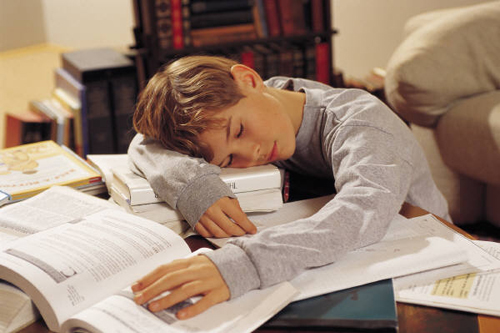Health Column: Let your teen sleep a little later

It’s a constant struggle during the teenage years. The kids fall asleep late at night, then struggle to wake up hours later, bright-eyed and bushy-tailed, with minimal time to catch the bus.
Experts agree that it might be time to allow teenagers more time to sleep.
Last Monday the American Academy of Pediatrics issued a new policy recommendation, calling on middle and high schools to push their start times back to 8:30 a.m. or later.
Currently, North Fork teens are cracking the books much earlier— at 7:15 a.m. in Riverhead and 7:45 in Greenport.
Factoring in bus pickup times that are nearly an hour earlier, local teens are waking up as early as 5 a.m., said Susan Lamontagne of the national nonprofit Start School Later’s Long Island chapter.
Dr. Jill Creighton, a pediatrician at Stony Brook Children’s Hospital who supports the AAP policy, said, “The health consequences of sleep deprivation are actually quite profound.
“There is an increased risk of obesity, increased rate of mood disturbances, suicides and impacts on a student’s ability to pay attention in school,” she said.
Studies have also shown that sleepy teen driving leads to an increase in motor vehicle accidents, she said.
And while many believe their children can simply catch up on sleep on the weekends, Dr. Creighton said this misconception is not the case.
“Every night that you don’t get enough sleep, it compounds the problem of being able to fall asleep the next day,” she said.
Teens and young adults going through puberty need between 8 1/2 and 9 1/2 hours of sleep a night. At the same time, their biological clocks are different from those of their parents or elementary-aged siblings.
During puberty, adolescents release the sleep hormone melatonin about 90 minutes to two hours later than children and adults — so they aren’t sleepy until about 11 p.m. or later, said Stacy Simera, a licensed social worker and Start School Later national spokeswoman.
“So, therefore, it is a biochemical improbability for them to fall asleep when most are lying down at an earlier hour,” she said.
She referred to a University of Minnesota study involving more than 9,000 high school students in different districts over a three-year period.
The study found that students who started school at 8:30 a.m. or later had better attendance, less tardiness, decreased instances of substance abuse and fewer symptoms of depression.
But perhaps more importantly, the study also found that those students had higher standardized test scores and that academic performance in math, English, science and social studies improved.
Ms. Simera said common roadblocks that districts encounter when considering a change in the start time are managing transportation and potential impacts on sports.
But, she said, if districts can overcome transportation issues, later start times can actually be beneficial to a school’s athletic program.
“Smart athletic directors know that a well-rested athlete performs better because they have better reaction times,” she said
According to the AAP, adolescent athletes who get eight or more hours of sleep each night are 68 percent less likely to be injured.
“Athletic directors around the country [whose school start times were moved back] told me it worked out better than they thought it would,” Ms. Simera said.
She noted that state legislators in Maryland, Virginia and Florida are working on legislation seeking a statewide time change, with other states likely to follow suit.
So for the senior “early bird” teacher who enjoys poking fun at sleepyhead students — go easy. A kid’s got to sleep, right?
 Got a health question or column idea? Email Carrie Miller at [email protected]. Follow @carriemiller01
Got a health question or column idea? Email Carrie Miller at [email protected]. Follow @carriemiller01








